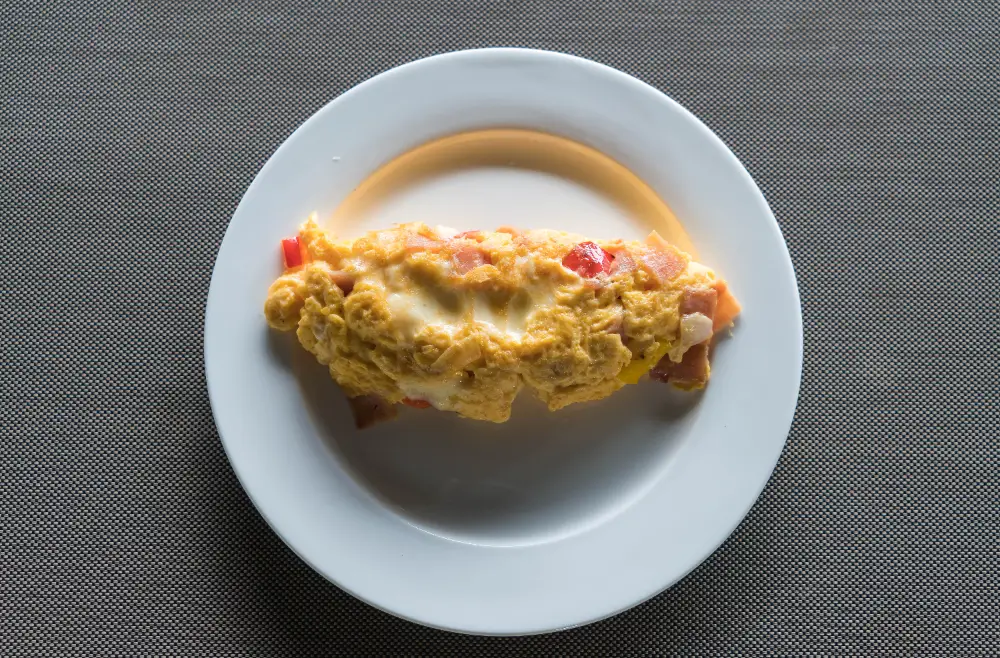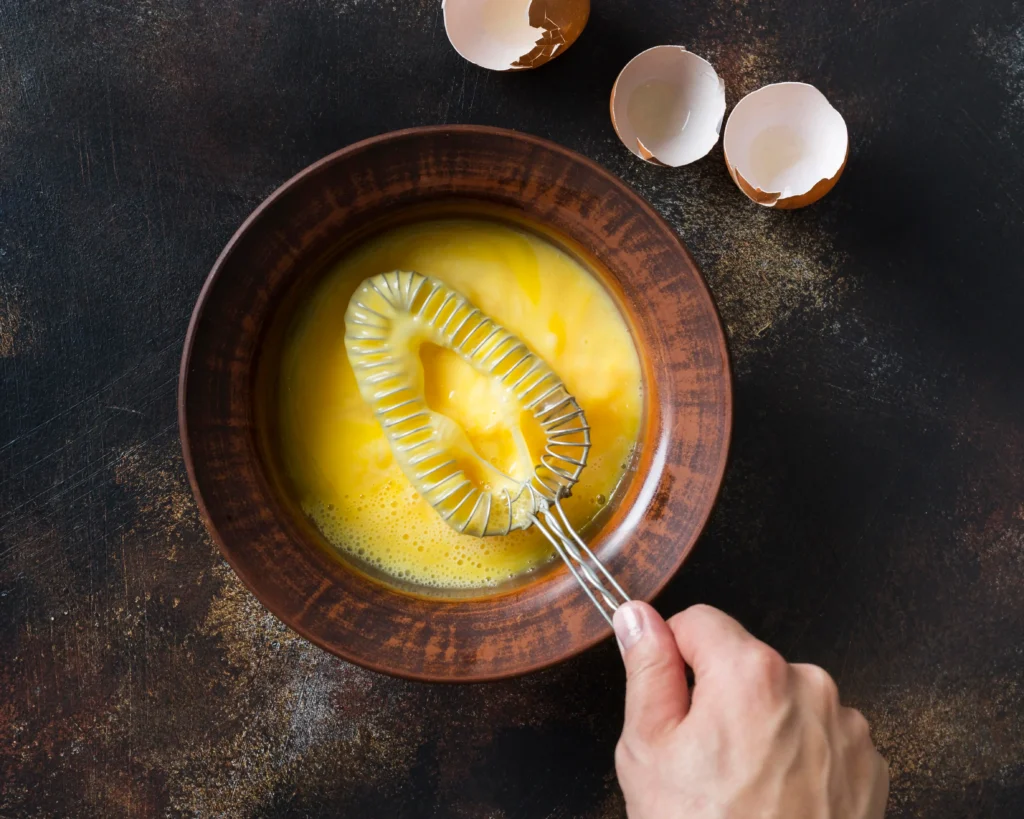
Scrambled eggs are a breakfast classic, cherished for their simplicity and versatility. But what can you use instead of milk in scrambled eggs when you’re out of it, or when you’re seeking an alternative due to dietary restrictions or personal preferences? Don’t fret—there are plenty of dairy-based and non-dairy options that will help you whip up fluffy, creamy scrambled eggs. From rich cream to almond milk or even water, the possibilities are endless.
This article explores practical, delicious milk substitutes for scrambled eggs, detailing their unique properties and how to use them effectively. Along the way, we’ll share tips to enhance your scrambled eggs, whether you stick with traditional ingredients or experiment with alternatives. Let’s dive in!
Introduction
Scrambled eggs often rely on milk to enhance their texture and flavor. Yet, many substitutes—both dairy-based and plant-based—can provide equally satisfying results. Whether you’re looking for something richer, creamier, or entirely plant-based, this guide has you covered.
Why Substitute Milk in Scrambled Eggs?
Milk contributes to the creamy texture and subtle flavor of scrambled eggs, but it’s not always necessary. Some people skip milk for dietary reasons, while others prefer the natural flavor of eggs without any dilution. Substitutes offer a way to maintain or even enhance the fluffiness and taste while meeting specific needs, like lactose intolerance or vegan diets.
Overview of Dairy and Non-Dairy Alternatives
From heavy cream and goat milk to almond milk and soy milk, each alternative has its quirks. Some add richness, while others bring a unique flavor twist. Even plain water can do the trick if you know how to use it! This article delves into these options, showing you how to achieve perfectly cooked eggs without relying on milk.
Dairy-Based Substitutes for Milk in Scrambled Eggs
Dairy-based substitutes are ideal for those who still enjoy traditional flavors but want to tweak their scrambled egg recipes. Whether you’re aiming for richer, fluffier eggs or experimenting with new textures, these options are perfect.
Cream: A Rich, Flavorful Option
Heavy cream is a luxurious substitute that enhances the richness of scrambled eggs. Its high-fat content creates a velvety texture, making each bite melt in your mouth. Simply whisk a splash of cream into your eggs for indulgent results. Bonus: Cream also brings added vitamins like A, D, and E.
Half-and-Half: Balancing Creaminess and Lightness
For a middle ground between cream and milk, half-and-half is a great pick. It combines milk and cream, providing the fat necessary for fluffiness without being overly heavy. This substitute is perfect if you want a balance of creaminess and traditional taste.
Cream Cheese: Adding a Unique Texture and Taste
Cream cheese adds a slight tang and an extra creamy texture to scrambled eggs. Use it sparingly by whisking in small chunks for a smooth, decadent finish. Plus, it’s a keto-friendly option for those on low-carb diets.
Evaporated Milk: A Convenient Pantry Staple
If you’re short on fresh dairy, evaporated milk is an excellent alternative. Its reduced water content adds a thick, creamy consistency to scrambled eggs. Use it directly from the can, but keep the quantity small to avoid overwhelming the eggs’ flavor.
Goat Milk: A Slightly Exotic Alternative
For a touch of novelty, goat milk offers a similar texture to cow’s milk but with a hint of nuttiness. It’s a fantastic option for making scrambled eggs feel a bit more gourmet.
Powdered Milk: For Long Shelf Life and Ease of Use
Powdered milk is a handy, long-lasting substitute. Rehydrate it before use to ensure a similar consistency to fresh milk. While its flavor may be slightly muted, it blends seamlessly into scrambled eggs.
For more insights on dairy-based alternatives, check out this recipe for scrambled eggs without milk.
Non-Dairy Milk Substitutes for Scrambled Eggs
Non-dairy substitutes are perfect for those seeking plant-based or lactose-free options. These alternatives bring their own unique flavors and textures, making them versatile for diverse dietary needs.
Almond Milk: A Nut-Based Alternative with Limitations
Almond milk is a popular choice, offering a light nutty flavor. It’s lower in fat, so the eggs may not be as creamy as with dairy options. To improve results, use unsweetened almond milk and consider adding a dab of butter for richness.
Oat Milk: Creamy and Nutrient-Rich
Oat milk stands out with its creaminess and subtle oat flavor. Its higher viscosity mimics cow’s milk well, making it a top choice for fluffy scrambled eggs. Use it sparingly to avoid overpowering the eggs’ natural taste.
Rice Milk: Sweet and Thin with Unique Properties
Rice milk is thinner and slightly sweet, which can affect the texture and flavor of scrambled eggs. While it’s a great option for those with nut or soy allergies, it’s best to combine it with a small amount of fat like olive oil or butter for better consistency.
Soy Milk: Protein-Packed and Versatile
Soy milk is a robust alternative, offering almost the same protein levels as cow’s milk. Its thicker texture makes it suitable for creating creamy, fluffy scrambled eggs. Always use unsweetened soy milk to avoid any unwanted sweetness in your dish.
These non-dairy options ensure that anyone can enjoy delicious scrambled eggs without missing out on texture or flavor. For even more tips, explore this guide to making scrambled eggs with water or non-dairy substitutes.

Using Water as a Milk Alternative
Water might seem like an unusual substitute for milk in scrambled eggs, but it’s a surprisingly effective option. It’s simple, accessible, and works well for anyone avoiding dairy altogether.
When and Why to Use Water
Water serves as an excellent milk substitute in scrambled eggs when you’re in a pinch or aiming for a lighter dish. Adding a tablespoon of water per egg helps create steam during cooking, which results in fluffy, tender scrambled eggs. While it won’t add richness like dairy, it ensures your eggs stay moist and airy.
How to Achieve Fluffiness Without Milk
To get fluffy scrambled eggs using water, whisk the eggs thoroughly to incorporate air. Add water just before cooking, and use medium-low heat to avoid overcooking. For added flavor, consider mixing in butter, olive oil, or even a pinch of salt and pepper.
For more tips on preparing scrambled eggs without milk, visit Scrambled Eggs Without Milk.
Enhancing Scrambled Eggs Without Milk Substitutes
Even without milk or its substitutes, you can still elevate your scrambled eggs. By adjusting your cooking techniques and choosing complementary ingredients, you can create a delightful dish.
Best Cooking Techniques for Milk-Free Scrambled Eggs
The secret to perfect scrambled eggs lies in the method. Cook over low heat to maintain tenderness and prevent rubbery textures. Stir occasionally, but not too often, to develop creamy curds. Using fresh eggs enhances flavor and texture, while whisking them well ensures even cooking.
The Role of Fats Like Butter or Oil
Without milk, fats play an essential role in adding flavor and richness. Butter is a classic choice, giving eggs a creamy finish. Alternatively, olive oil offers a subtle, fruity taste, while bacon grease or duck fat brings a smoky depth. A small amount of these fats can transform ordinary eggs into a culinary delight.
For more creative ideas on cooking scrambled eggs, explore additional recipes on Tangle Recipes.
FAQ Section
What Happens If I Don’t Add Milk or Any Substitute?
Skipping milk or a substitute doesn’t mean your scrambled eggs will be dull. Without milk, eggs retain their natural flavor and cook up slightly firmer. You can still achieve fluffy, tender eggs by whisking them thoroughly and cooking on low heat. Adding a touch of fat, like butter or olive oil, will enhance their creaminess.
Can I Use Yogurt Instead of Milk in Scrambled Eggs?
Yes, you can! Yogurt works as an excellent alternative, lending a tangy flavor and creamy texture to scrambled eggs. Use plain, unsweetened yogurt for the best results. Whisk it into the eggs, and you’ll end up with rich, velvety scrambled eggs that are a little different but equally delicious.
Which Substitute Tastes Closest to Milk?
If you’re wondering “What can I use instead of milk in scrambled eggs?”, cream or half-and-half are the closest matches. They mimic milk’s texture and add a similar richness. Among non-dairy options, soy milk is the most comparable in thickness and taste.
Final Thoughts and Recommendations
Finding a substitute for milk in scrambled eggs isn’t as hard as it seems. Whether you opt for rich dairy options like cream or plant-based alternatives like oat milk, the possibilities are varied and exciting. Each choice adds its own twist, so don’t hesitate to experiment.
If you’re looking for inspiration, remember that even water can work wonders in creating fluffy scrambled eggs. It’s all about technique and a little creativity in the kitchen.
For more recipes and tips, visit Tangle Recipes. Enjoy your next scrambled egg adventure!

